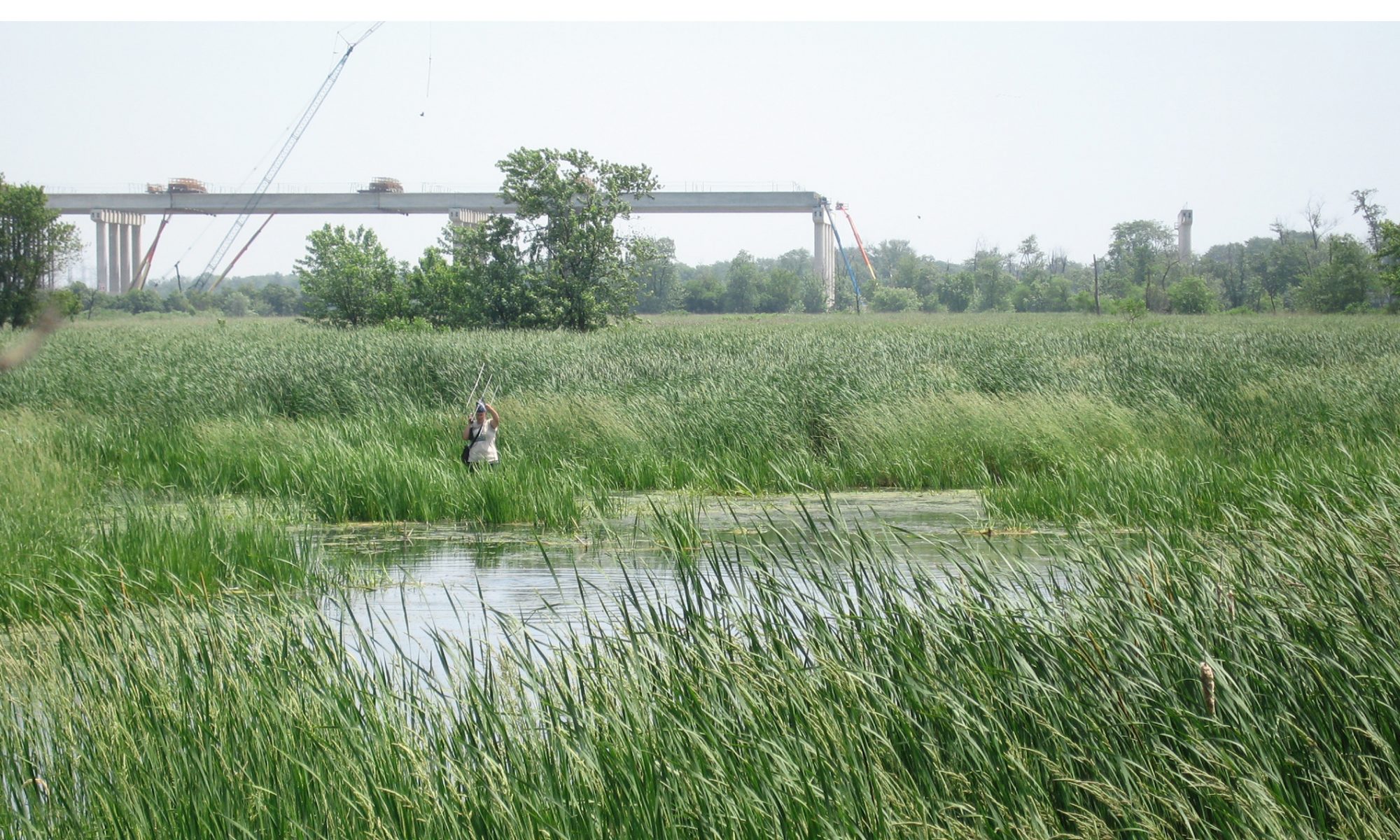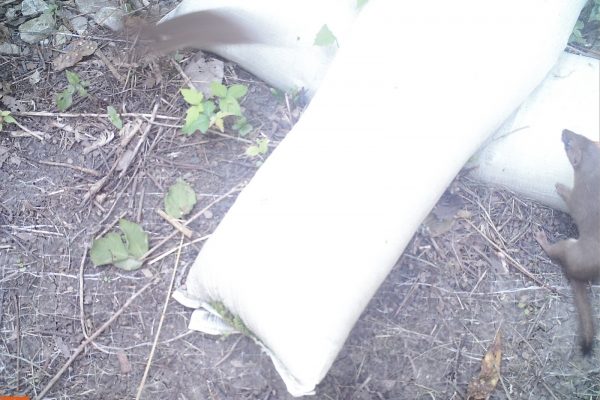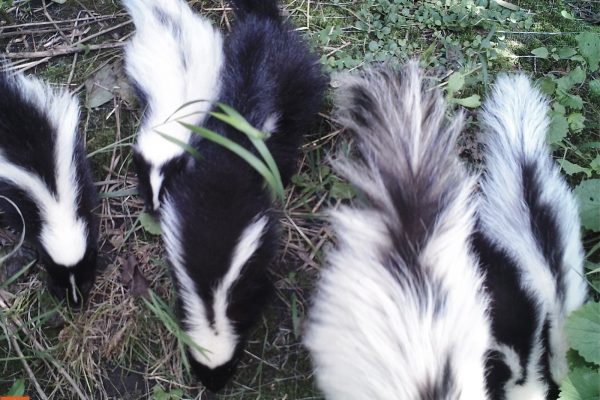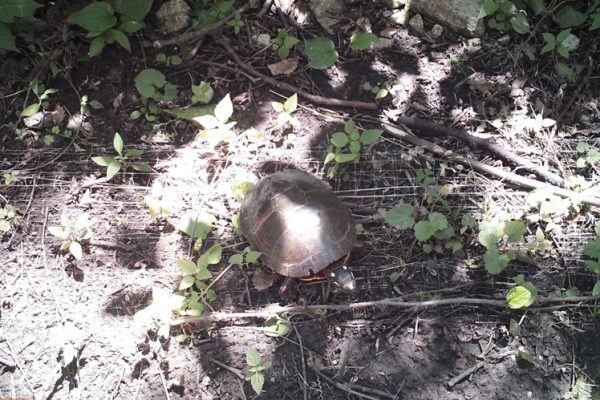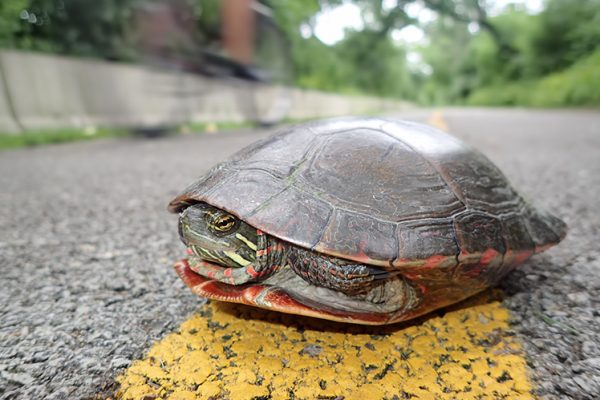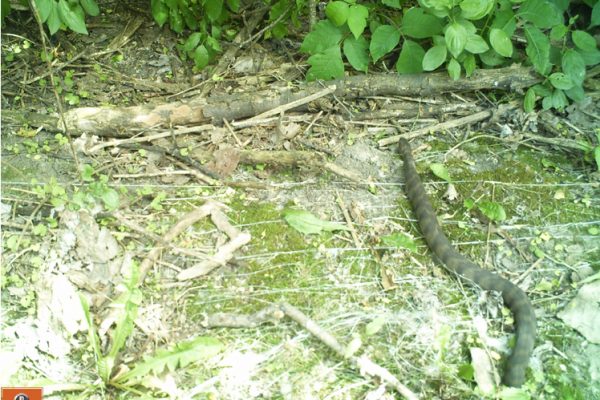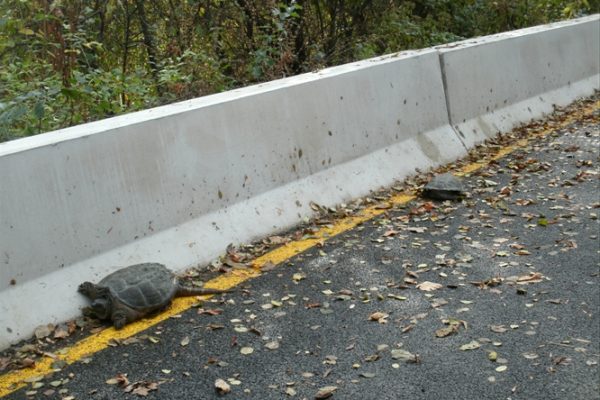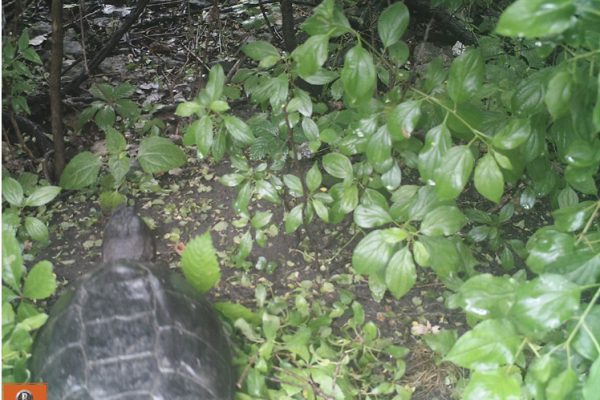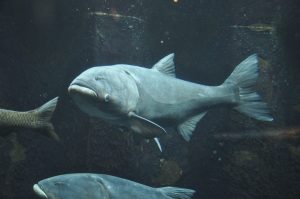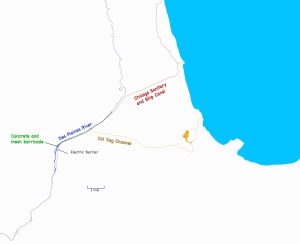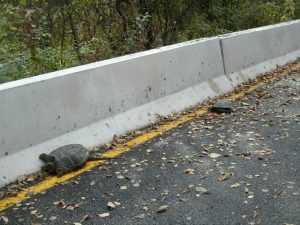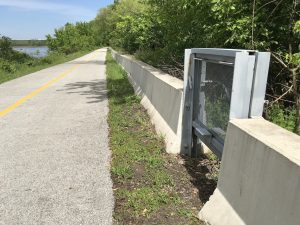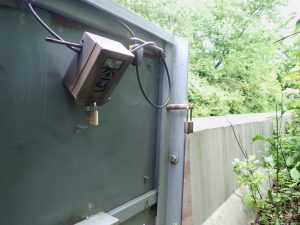Silver and Bighead Carp are exotic invasive fish stocked originally in farm ponds. After escapes and accidental releases into streams, these fast-growing, prolific breeders have made their way up the Mississippi River and into the Illinois River drainage, devastating biotic communities. As they advance towards the Great Lakes, they threaten a multi-billion-dollar fishery.
Various strategies have been implemented to prevent their spread, including bubble nets and electric aquatic “fences.” During high water events, the Des Plaines River can overflow into the Chicago Sanitary and Ship Canal, providing a potential unprotected pathway for Carp to reach Lake Michigan.
In 2010 a 13-mile concrete and steel mesh wall was put in place to keep the Des Plaines River and the Chicago Sanitary and Ship Canal separate during flood events.
The barrier keeps carp out but may also restrict animal movement (especially reptiles and amphibians) between the Des Plaines River and adjacent wetlands.
Twenty gates were installed in the barrier to allow animal movement, specifically the state endangered Blanding’s Turtle, and are closed during flood events.
What we’ve done:
- We attached cameras to the back of 14 gates to see what animals use the gates.
- We conducted visual surveys for reptiles and amphibians along the Carp Barrier.
What we’ve found:
- During visual surveys:
- 5 amphibian species
- 10 reptile species including 3 Blanding’s Turtles
- With trail cams
- 2 amphibian species
- 9 reptile species including Blanding’s Turtles 12 times
- Gates effectively facilitated animal movements
- Barrier increased predation and mortality risks.
- 54 depredated nests along the trail and barrier
- mortality from cycling and mowing.
- Reptiles, especially snakes, were more at risk to bicycle traffic and mowing than predation.
What we recommended:
- Mowing should be avoided in late May – June when snake and turtle activity are highest.
- 3 additional gates should be constructed between the northeastern most gate and the I-355 Bridge, where numerous turtles were found along the barrier.
Other Amphibian and Reptile research
Publications:
Ross, J. P., and M. J. Dreslik. 2020. Camera trap monitoring of turtle passage gates along the Des Plaines River carp barrier. Illinois Natural History Survey Technical Report. 2020(3):1–45.
Ross, J. P., C. Y. Feng, J. K. Warner, and M. J. Dreslik. 2017. Turtle monitoring at the Interstate 355 Des Plaines River bridge crossing and the Centennial Trail Asian carp barrier. Illinois Natural History Survey Technical Report 2017(15):1–45.
